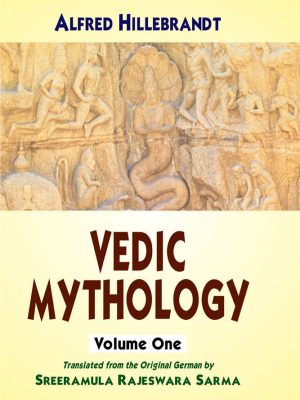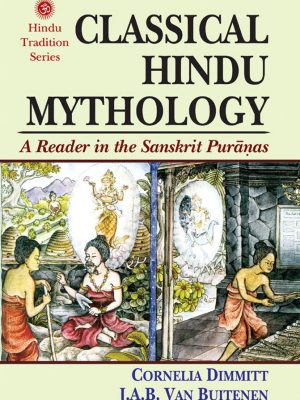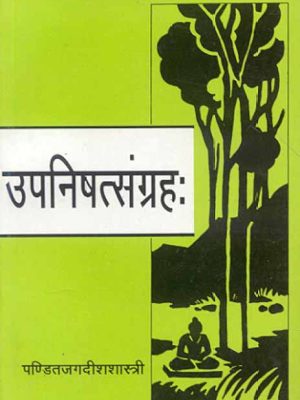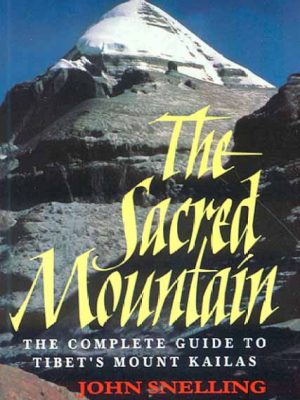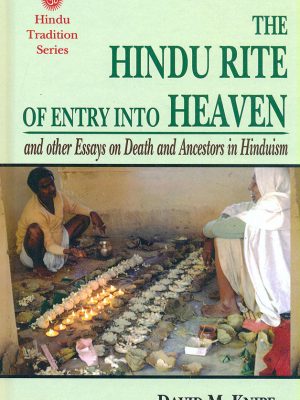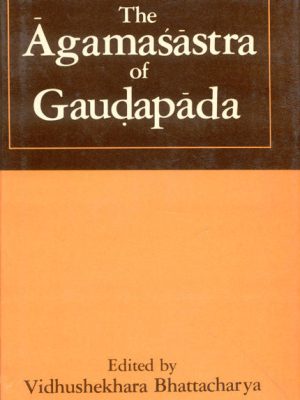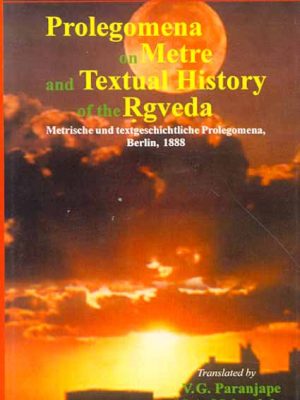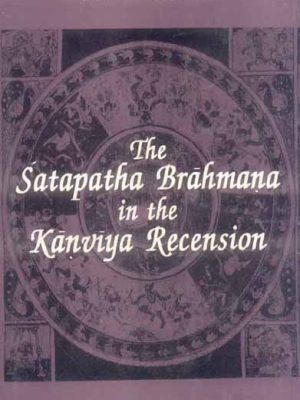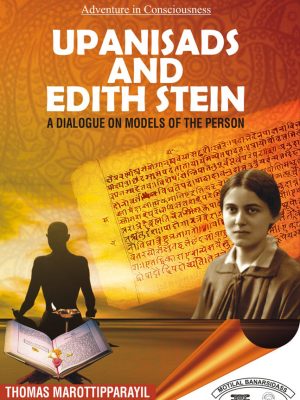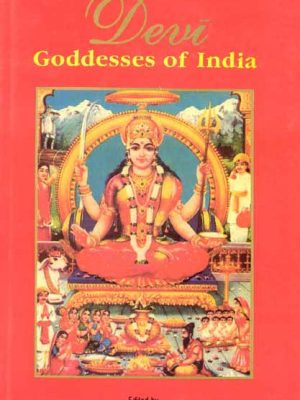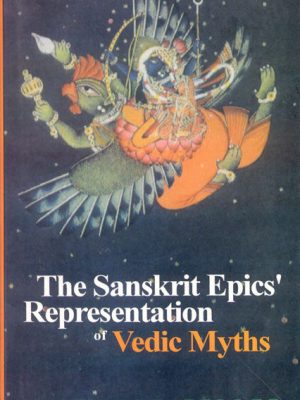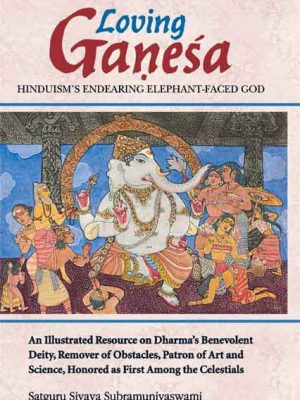-
- Vendor:
Ethnics of kutch
-
- Vendor:
Motilal Banarsidass Publishing House
-
- Vendor:
Motilal Banarsidass Publishing House
-
- Vendor:
Ethnics of kutch
-
- Vendor:
Motilal Banarsidass Publishing House
-
- Vendor:
Motilal Banarsidass Publishing House
-
- Vendor:
Motilal Banarsidass Publishing House
-
- Vendor:
Motilal Banarsidass Publishing House
-
- Vendor:
Ethnics of kutch
-
- Vendor:
Motilal Banarsidass Publishing House
-
- Vendor:
Ethnics of kutch
-
- Vendor:
Ethnics of kutch
-
- Vendor:
Motilal Banarsidass Publishing House
-
- Vendor:
Motilal Banarsidass Publishing House
-
- Vendor:
Ethnics of kutch
-
- Vendor:
Ethnics of kutch
-
- Vendor:
Pharma Science The Indian Ayurveda
-
- Vendor:
Motilal Banarsidass Publishing House
-
- Vendor:
Motilal Banarsidass Publishing House
-
- Vendor:
Motilal Banarsidass Publishing House
-
- Vendor:
Motilal Banarsidass Publishing House
-
- Vendor:
Motilal Banarsidass Publishing House
-
- Vendor:
Ethnics of kutch
-
- Vendor:
Motilal Banarsidass Publishing House
Hinduism
Hinduism is one of the oldest religions. As time passes most people are growing away from their old roots. Our collection of books helps you live the glory of Hinduism. These books help you understand the mythological and spiritual tradition of Hinduism. It not only helps you revive the culture but also teaches you about history.
-
Classical Hindu Mythology: A Reader in the Sanskrit Puranas
Classical Hindu Mythology: A Reader in the Sanskrit Puranas
The Mahapuranas are the texts that best represent the conventional wisdom of Hindu mythology. This anthology includes recent translations of these stories, of which only a handful have ever been made accessible in English previously, and as a result, it makes available a substantial new section of Hindu mythology.
There are six different chapters in all in this book. Myths are told in “Origins” that are associated with creation, time, and space. The book “Seers, Kings, and Supernaturals” tells stories of rivers, trees, animals, demons, and mankind, most notably heroes and wise men. Krsna, Visnu, and Siva each have their own chapter to devote to debunking the many myths that circulate about them. The tales of the wives and lovers of the gods are told in the chapter titled “The Goddess.” The chapter also discusses Kali, the fierce goddess of conflict.
In the introductions that they have written, the editors have provided not only a historical context in which to analyse Hindu mythology but also a comprehensive examination of the sources upon which it is based. The several names that were originally given. The editors have included a comprehensive lexicon in order to make these names more understandable.
Author
Cornelia Dimmitt
₹995.00 -
Upanishad Sangrah: (188 Upanishdon ka Sangrah)
Upanishad Sangrah:(188 Upanishdon ka Sangrah)
The publication gives an exhaustive account of the development of Sanskrit literature in a format that is concise and condensed. It encompasses a broad study of many forms of literature, including the Vedas, Epics, Puranas, Classics, and Philosophy. It gives insight on the life and philosophy of Ancient and Medieval India as reflected in the literary products of those times in India’s history. [Citation needed] It offers knowledge that is not only fascinating but also instructional, and it does so via the short epitome that is provided in the appendix on technical literature, which includes law, science, and the arts. The bibliographical notes and index that are given at the very end contribute to the worth of the work and make it as helpful as possible to the reader. Even in this day and age of highly developed history, when even the exceptional investigations of prominent antiquarians have become obsolete, the usefulness of this relatively short piece of work has not lessened in any way despite the passage of three quarters of a century.
About the Author(s)
Pandit Jagdish Shastri
₹995.00 -
The Sacred Mountain: The Complete Guide to Tibet’s Mount Kailas
The Sacred Mountain: The Complete Guide to Tibet’s Mount Kailas
Mount Kailas-the most sacred mountain in the world. Uncannily symmetrical, this remote and remarkable peak located in the forbidden land of Tibet might have been built by superhuman hands. It stands out of a primordial hands. It stands out of a primordial landscape: a horizontally stratified plinth thousands of feet high, crowned with a perfect cone of pure snow.
To Hindus it is the Throne of the great god Shiva. Buddhists associate it with Chakrasamvara, a powerful Tantric deity, and with the sage Milarepa, who fought a magic duel there with a shaman priest in ancient times. To the Bonpo, the followers of the indigenous religion of Tibet, it is the giant crystal on which their founder, Thonpa Shenrab, descended to earth from the skies.
For more than a millennium, Buddhist, Hindu and Bonpo pilgrims have been visiting this Throne of the Gods and performing pious cirumabulation around it. John Snelling recounts their difficult and dangerous pilgrimages and analyzes the spiritual significance of Kailas-and of sacred mountains in general. He also retells the tales of the handful of Western travellers who reached Kailas between 1715 and 1949-an exclusive club of intrepid explorers, mountaineers, big game hunters and officials. Then in 1984 the Chinese authorities allowed Westerners freer access; so the tales of a new wave of contemporary travellers have in this completely revised and enlarged edition been added to those of their great precursors.
The new edition of this acclaimed travel book is particularly indispensible for all those wishing to visit Mount Kailas, for it contains a comprehensive Guide for Travellers as well as up-to-date maps. For the armchair traveller there is much to absorb and thrill too-not least the lavish array of photographs, many in colour…
₹995.00 -
The Agamasastra of Gaudapada
The Agamasastra of Gaudapada
Because the author was dissatisfied with the interpretation provided by Sankara and his followers as well as the interpretation provided by some other teachers, he has made an effort in the following pages to present to the readers his own interpretation of the work based on how he has understood it. On the other hand, he makes no claim whatsoever that his interpretation is the interpretation, in other words, the meaning that Gaudapada himself had in mind. The author of the current book has provided a fresh edition of the text of the Agamasastra based on a number of distinct manuscripts and editions, which is then followed by an English translation of the text. His annotation follows immediately after this. Appendices are included at the conclusion of the book and include the text of the Mandukya Upanisad as well as an English translation of it. Additionally, there are many distinct indexes and versions of the MSS that were used to create the edition of the Agamasastra text.
About the Author(s)
Vidhushekhara Bhattacharya
₹895.00The Agamasastra of Gaudapada
₹895.00 -
Prolegomena on Metre and Textual History of the Rgveda: Metrische und textgeschichtliche Prolegomena, Berlin, 1888
Prolegomena on Metre and Textual History of the Rgveda: Metrische und textgeschichtliche Prolegomena, Berlin, 1888
Oldenberg made a distinction between the “original text” of the Rgveda, which is the form in which the rsis composed and recited their hymns, and the “traditional text,” which has been handed down to us in a fixed form by the oral tradition. The “original text” of the Rgveda is the form in which the rsis composed and recited their hymns. Oldenberg conducted a comprehensive analysis of all parts of the traditional text in order to give the original text to the academic community in the form and arrangement that he had uncovered. This was done so that other researchers may benefit from his findings. Oldenberg always intended for the contents that are now being published in this book to serve as a Preface to his planned edition of the Rgveda. This volume is now being published. They are the product of Oldenberg’s in-depth research on the Vedic metre, the principles that underlie the arrangement of the hymns in the Rgveda Samhita, the variations found in the text of the mantras as found in the Rgveda and the later Samhitas and the Brahmanas, orthoepic diaskeuasis, and the two Sakhas of the Rgveda: Sakala and Baskala. Later on, Oldenberg decided against releasing his ‘critical edition’ of the Rgveda as he had originally intended.
Author
HERMANN OLDENBERG,
TRANSLATED BY: V.G. PARANJAPE & M.A. MEHENDALE
₹895.00 -
-
The Origins of Evil in Hindu Mythology
The Origins of Evil in Hindu Mythology
James Austin’s insights into the fundamental connections that exist between Zen Buddhism and brain science are continued in this volume, which is a follow-up to his extremely popular book Zen and the Brain. In Zen-Brain Reflections, Austin, a clinical neurologist, researcher, and Zen practitioner, investigates the growing psychological processes and brain alterations connected with the path of long-range contemplative training. Austin is also a researcher at the University of California, San Francisco. Not only does Austin draw from the most recent findings in neuroscience and new neuroimaging investigations, but he also pulls from Zen literature and his own experience with different states of consciousness. This book picks up exactly where the last one left off. Zen-Brain Reflections. It provides answers to issues such as “how exactly do placebos and acupuncture impact the brain?” Can scientists using neuroimaging pinpoint the locations in our brains where our concepts of self first take shape? How can the most cutting-edge brain imaging techniques be used to better effectively monitor meditators? How is it that extensive amounts of time spent meditating, along with fleeting experiences of enlightenment, may bring about fundamental changes in the physiological makeup of the brain? In a number of the chapters, there are theories that may be tested that indicate methods to associate normal brain processes and the practise of meditation with the occurrence of unusual states of consciousness. After making a quick introduction to the subject of Zen and discussing the most current findings from research into meditation, Austin discusses the most recent findings from research on the amygdala, frontotemporal connections, and paralimbic extensions of the limbic system. After that, he investigates the many states of consciousness, from the earliest, most shallow absorptions to the latter, most significant “peak experiences.” This discussion starts with the states known as kensho and satori and includes an updated study of the many ways in which these states convey “oneness.” He refers beyond the even more advanced phases toward that uncommon continuing degree of enlightenment that is characterised by the manifestation of “sage wisdom.” Last but not least, in
Author
W.D. O’Flaherty
₹850.00 -
-
-
Vallabhacarya on the Love Games of Krsna
Vallabhacarya on the Love Games of Krsna
Vallabhacarya on the Love Games of Krsna this book provides a translation of a classic commentary on the six chapters of Book 10 of the Bhagavata Purana that chronicle Krsna’s love games with the Gopis. The original commentary was written in Sanskrit, and this book includes a translation of the Sanskrit text. The commentary is known as the Subodhini of Saint Vallabhacarya, who was the originator of the tradition. It begins with an explanation of Vallabhacarya’s essential viewpoints on the love games, which can be found in the introduction.
About the Author(s)
James D. Redington
₹795.00 -
The Sanskrit Epics Representation of Vedic Myths
The Sanskrit Epics Representation of Vedic Myths
As the name of this research project, “The Sanskrit Epics’ Representation of Vedic Myths,” suggests, my objective is to investigate the manner in which certain myths that are first presented (as far as India is concerned) in the Vedas, and more specifically in the Rgveda, are retold in the Sanskrit Epics, the Mahabharata and the Ramayana, and to investigate the manner in which the Epics re-use the mythological material Before we go any further, I will first provide a concise synopsis of the type, contents, and dates of the documents that were discussed earlier in this paragraph. The various passages ‘holy speech’ is what the phrase’mantra’ or ‘brahman’ meant when it was first used, and the name ‘Veda’ referred to the earliest layer of literature in the Sanskrit language. According to later Indian tradition — in particular, according to the Mimamsa, which is a school of Vedic exegesis — the Veda is eternal and authorless, and it was a’revea1d’ to the Vedic rsis or seers. Other names for the Veda include the sruti, which can be translated as “that which has been heard,” or the “revelation.” The Veda is composed of many layers of writings; the earliest of these are known as the Samhitas, which literally translate to “collections.” There are four different Samhitas. The Rgveda Samhita, also known as the “collection of poems,” is the earliest of the four. It was written between 1500 and 1000 BCE and is organised into ten mandalas, also known as books. The tenth mandala is often believed to be a more recent addition to the collection in comparison to the other nine mandalas.
Author
DANIELLE FELLER
₹795.00 -
Loving Ganesa – Hinduism’s Endearing Elephant-Faced God: An illustrated resource on Dharma’s Benevolent Deity, remover of obstacles, Patron of art and science, Honored as first among the Celestials
Loving Ganesa – Hinduism’s Endearing Elephant-Faced God: An illustrated resource on Dharma’s Benevolent Deity, remover of obstacles, Patron of art and science, Honored as first among the Celestials
There is no other novel about this well-loved deity who has an elephant’s face that is more emotionally moving. This brilliant work of art will bring the Lord of Dharma to life for you as you experience it. It makes contacting this merciful Lord simple and gives one motivation to do so.
“In this book, Satguru Subramuniyaswami demonstrates his extensive knowledge, as well as his profound intuition and wisdom, as well as his heartfelt devotion and love of Lord Genesa. Lord Genesa is known as the Protector of the Sanatana Dharma, the Remover of Obstacles, the Patron of Arts and Science, and the Mediator and Intercessor between Man and God. He is the God who is on our side, who is our friend and who actually protects and provides for us.
“The Great Genesa is presented to the reader in a language that is exemplary, unambiguous, and refined, using words that are easy to understand and with a sense of humour that is invigorating and subtle. Along with mantras, prayers, and pujas to show homage to the kind elephant-faced God, each and every facet, relation, symbol, and meaning of Lord Genesa has been expertly described and illustrated. Many people have the misconception that Lord Genesa is an obese, arrogant, elephant-headed deity who is connected to the Hindu pantheon in some way, despite the fact that he has never truly gotten to know any of the Hindu deities. In the event that this has been the case for you, then Loving Genesa has arrived at the perfect moment to provide you with the appropriate responses to all of your inquiries and to bring you closer to the magnificent and endearing Ganapati, who is the Keeper of All Knowledge and the Great Ruler of the Universe.
“My deepest gratitude goes out to Satguruji Subramuniyaswami for the gift of this magnificent book, which is a source of an inexhaustible supply of heavenly nectar, enlightenment, and happiness. I pray that all of you who read this may be blessed with pleasure, success, and the heavenly protection of the loving and compassionate Genesa.” (Sri Sri Paramhans Swami Maheshwarananda, International Sri Deep Madhavananda Ashram Fellowship; Vienna, Austria)
Author
Satguru Sivaya SubramaniyaSwami
₹795.00 -
The Cult of Jagannatha: Myths and Rituals
The Cult of Jagannatha: Myths and Rituals
Orissan ethnography is presented in a fresh light via the lens of The Cult of Jagannatha: Myths and Rituals. This book gives considerable evidence on the significance of religious orthodoxy, which stands in stark contrast to the mainstream interpretations, which centre on the impacts of tribal groups and the history of aryanization. In Orissa, the shift from the coastal to the interior areas is marked by significant demographic and sociocultural discontinuities. These discontinuities may be seen most clearly while moving from the coastline to the inland regions. These geographical variances are presumably a consequence of aryanization that occurred through time. The historical reconstruction of this process has been the primary pillar on which ethnological narratives have traditionally been built. Traditions that developed in the delta plain are said to have been significantly impacted by the local populations who lived there, particularly those traditions that are connected to the delta plain’s two most important centres: the city of Puri and the temple of Jagannatha. The importance of sacrifice symbolism to Puri’s religious system is shown by a number of myths and rites. In spite of the fact that it is explicitly linked to an initial asvamedha, which refers to the sacrifice of a horse in the Vedic tradition, the construction of the big temple is nevertheless seen as a modification of the brick-fire altar. These relationships are further confirmed by an astonishing network of orthodox representations, both Vedic and Hindu. [Citation needed] [Citation needed] This acknowledgment of orthodoxy brings us back to the alleged differences between regional traditions. How should one understand the “specificity” of Puri’s iconography when it comes to his gods? What kind of respect should be accorded to the Sudras who are in charge of the rituals at the major temple? The current book offers fresh insight into these time-honored inquiries, which are addressed. The “strangeness” of Orissan ethnography is not as baffling as it may seem; rather, it is a specific but exceedingly consistent representation of Indian cultural norms and customs.
Author
Jose Carlos Gomes da Silva
₹795.00 -
Hindu Spirituality (Vol. 1): Vedas Through Vedanta
Hindu Spirituality (Vol. 1): Vedas Through Vedanta
The current book is a part of a series called World Spirituality: An Encyclopedic History of the Religious Quest. This series aims to reveal the spiritual knowledge of the human race as it has unfolded throughout history and this volume is a part of that series. It is aimed to demonstrate the autonomy of the tradition in the historical evolution and draws from the greatest level of study from across the globe. The book pulls together and portrays the richness of the spiritual legacy of the human race. This book explores the timeless and unchanging aspects of the Hindu religion. The papers that are included in this book are broken down and discussed according to one of eight categories. The following is a synopsis of the first volume of Hindu Spirituality: The Vedas by Way of Vedanta In this research project, a social and cultural anthropologist as well as an expert in the field of the study of religion collaborated in order to investigate recent shifts that have occurred in the religion practised by the majority of people in Sri Lanka. According to the perceptions of the Sinhala people themselves, Buddhism proper has always coexisted in the religious sphere with a spirit religion. While redemption is central to Buddhism, the spirit of religion is more concerned with the flourishing of the world. Buddhism Transformed is a book that provides a description and analysis of the developments that have significantly impacted the nature of the Sinhala religious practise in each of these places. This book is the first of its kind to describe in a methodical manner the cultural effects of the degradation in the way that the “other half” of the population in Sri Lanka lives. Following the country’s independence in 1948, significant progress was made in the areas of health care and literacy, but the country’s economy was unable to live up to the soaring aspirations of the country’s rapidly growing population. People fell into poverty and were more mobile, which contributed to the decline of the village community. Changes have taken place in what the authors refer to as “Protestant Buddhism” as a result of the emergence of new psychological requirements brought on by new strains in Sri Lankan society (the Buddhism formed under Protestant influence after British conquest). More and more individuals are interested in and appreciate altered states of consciousness, and among spirit cults, gods with less stringent moral standards are rising to prominence. The authors conclude by arguing that occurrences in Sri Lanka that first seem to be unusual in the religious history of India are, in fact, not entirely new.
Author
Krishnan Sivaraman
₹795.00


































